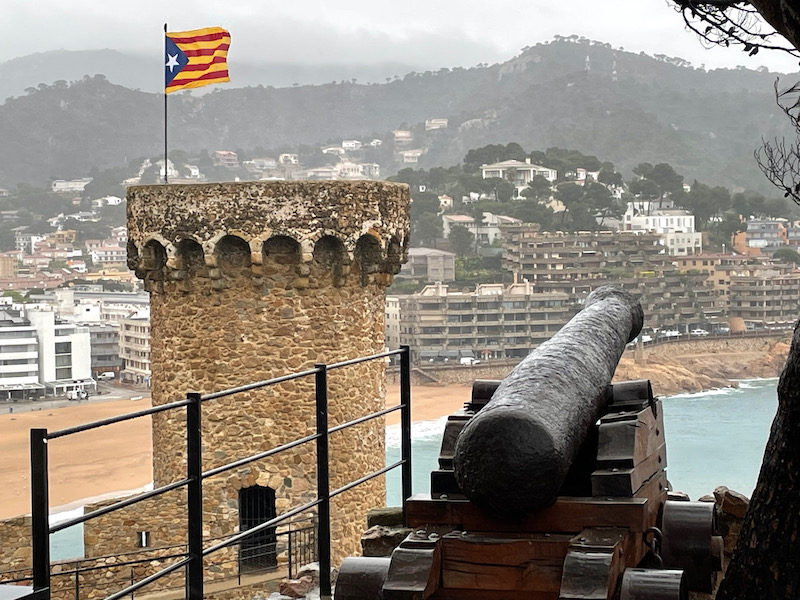Our Blog - Tossa de Mar, Spain
Tossa de Mar was a quick stop on the route, and the weather was horrible this day so we stayed even less time than we had planned. It is believed that the area has been continuously populated since neolithic times, and between the 4th - 1st century BC, the first Iberian settlements appeared, followed shortly after by the Romans in the 1st century.
Fast forward to sometime in the 12th century. The medieval town is walled off and a castle is built on the highest point. The castle is no longer there, but the medieval town and the fortifications remain. The first houses were built outside of the walls around 1500, as the town within the walls could no longer handle the population growth. This walled old town is the only remaining fortified medieval town on the Catalan coast. The original perimeter walls and battlements are largely conserved, with four round towers around the walls and three corner towers remaining. Here you can get a view of it from across the beach (where we parked).
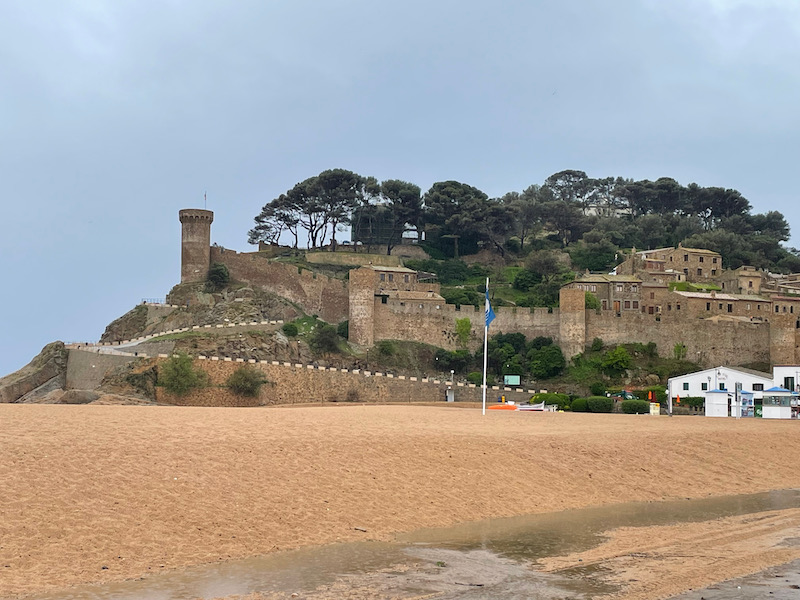
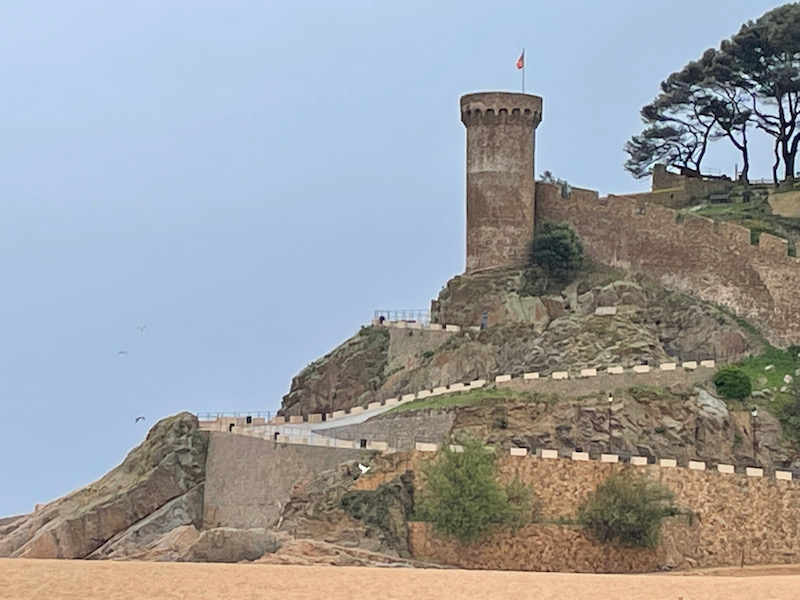
We made our way across the beach and got a view back at the rest of Tossa de Mar, and its HUGE beach. This is Platja Gran, 1 of 3 beaches in town. This one is almost 1200 feet long, or close to 4 football fields (393 yards).
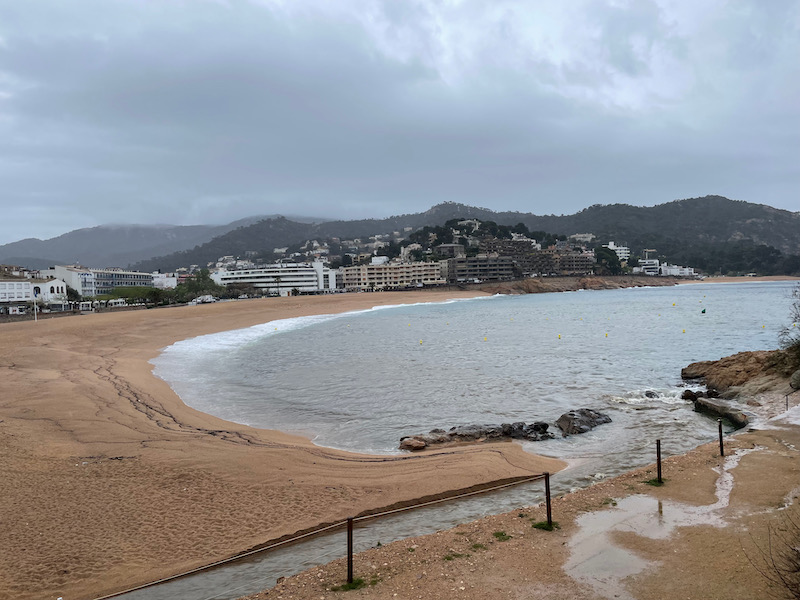
Then we headed up the windy road to go through the entrance gate, taking a look at the wall and a few of the towers.
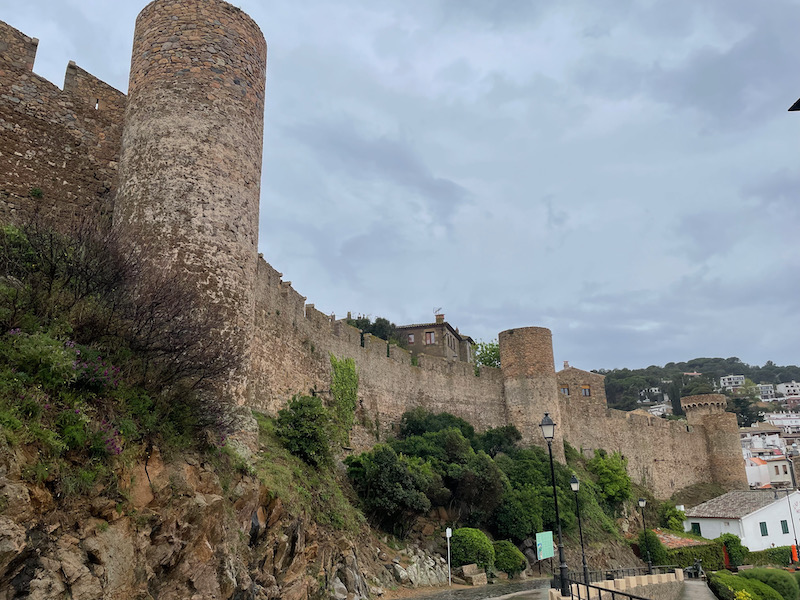
Just inside the gate, we found this monument to Ava Gardener. The 1951 British film entitled "Pandora and the flying Dutchman", starring Ava Gardner, was filmed in Tossa de Mar. It was released in the UK in February, but MGM delayed the release in the US until after the July release of the film "Show Boat". This sparked the tourism boom in Tossa.
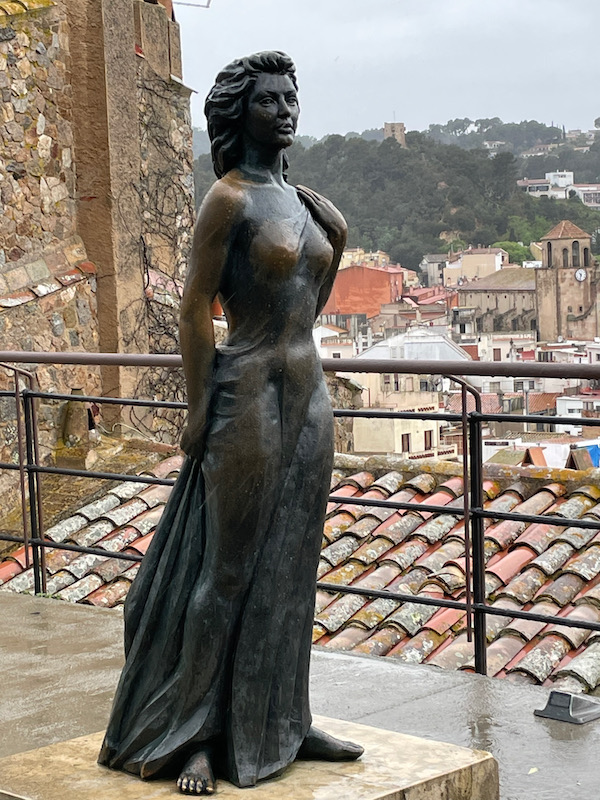
Here you can see the crenellations on the wall and a machicolated tower. The "crenellations" are the defensive architecture where you have rectangular gaps at regular intervals around the top. Arrows could be shot from the top through the crenels while taking defensive cover. Then at the top of the tower, you can see the arches all the way around. These are the "machicolated" part of the tower. Each of these arches covers a "machicolation", or an opening between through which stones or other material (boiling water, hot sand, tar, or boiling oil) could be dropped on attackers at the base of the tower.
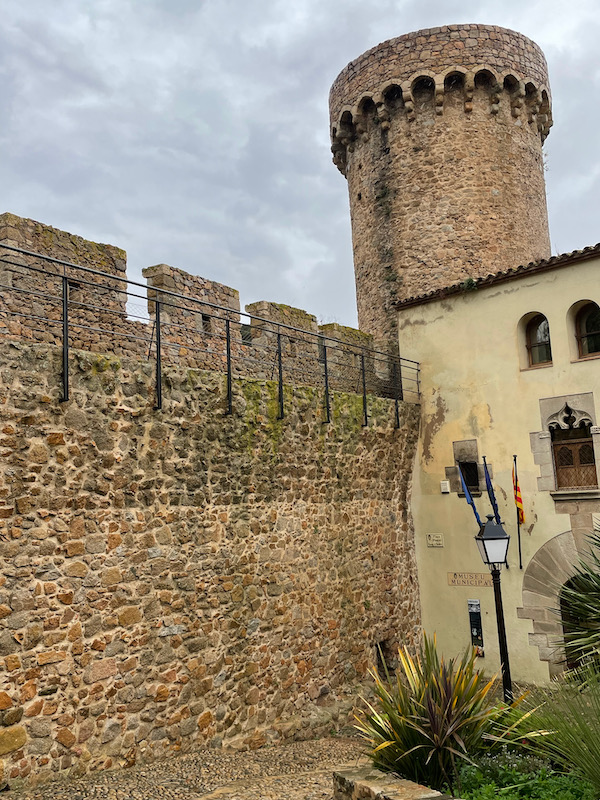
We made it to the top and got a great view of the Costa Brava from the top. Lucy didn't seem all that interested in the coastline, instead preferring to dig and roll in some dirt under a boat that had been changed into a flower planter.
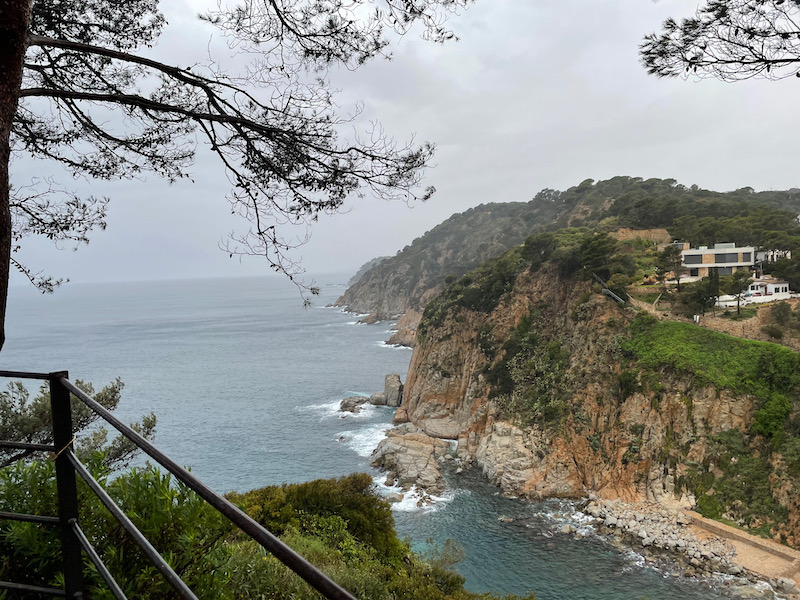
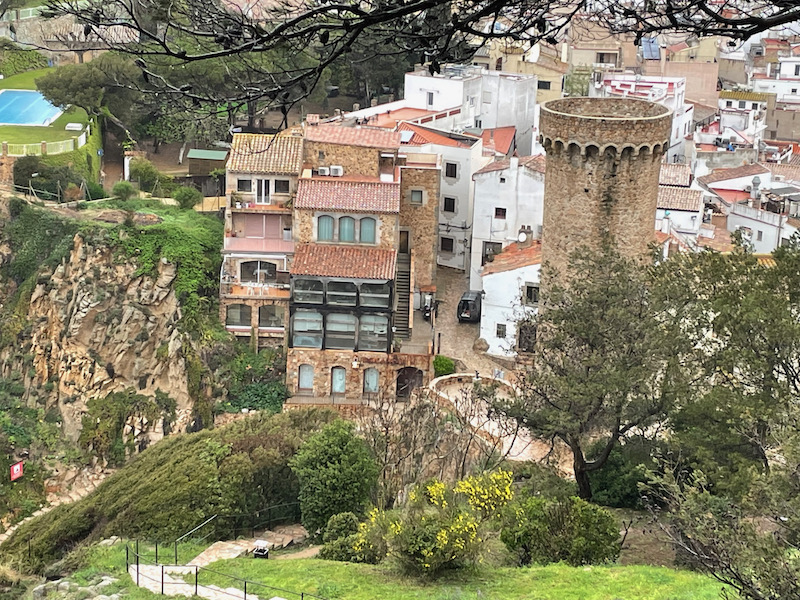

These are the remains of the late-Gothic 15th-century church of Sant Vicenç. What you see here are the apse and the sacristy. We couldn't even get close enough to take a good look at it as they are doing some renovation work it seems.
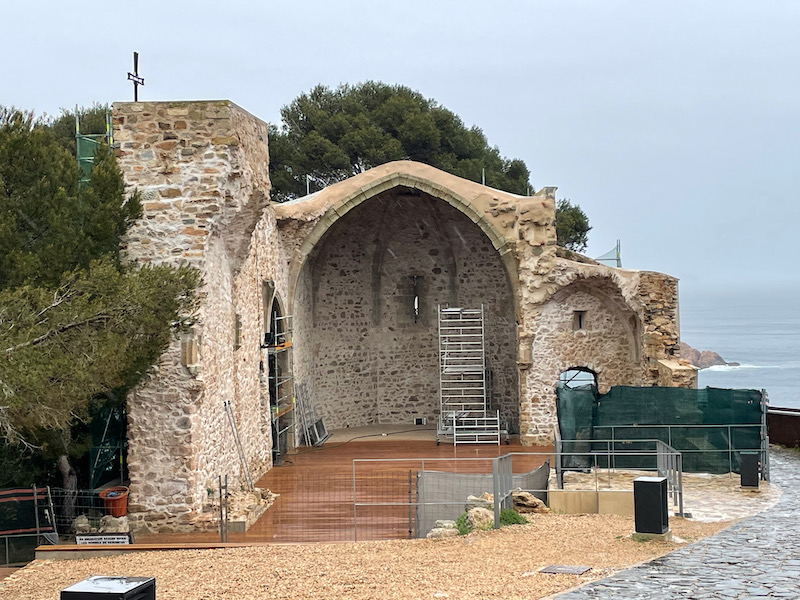
A closer view of the top of one of the machicolated towers and a 17th century cannon. The cannon is thought to have been in a tower that was blown up during the Napoleonic invasions and fell into the sea. Two cannons were recovered in 1966 during an underwater operation.
